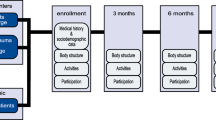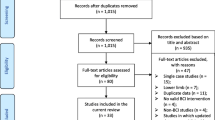Abstract
Background and aims: There are few studies on the functional outcome of patients with supratentorial (STS) and infratentorial stroke (ITS). They lead to conflicting conclusions and do not define the role of motor deficits on functional recovery of STS and ITS patients. We wished to investigate this. Methods: The study was carried out on 90 consecutive patients admitted to our Rehabilitation Department with clinical evidence of acute cerebrovascular accident. Neuroimaging data, clinical evidence, and the National Institute of Health Stroke Scale (NIH) were used to select two groups of patients: 1) 45 patients with supratentorial stroke lesion (STS group), 2) 45 patients with infratentorial stroke lesion (ITS group). The STS group included patients with hemiparesis, and the ITS group patients with ataxia. Patients were evaluated through the NIH, Fugl-Meyer scale, Klockgether score, CIRS, Trunk Control Test (TCT), Lindmark scale, Barthel index, and Katz index, at both admission and discharge. Results: At admission, there were no differences between the STS and ITS groups in disability or average Barthel, Lindmark and Katz scores. At discharge, the Katz index average scores were significantly higher (p=0.000) and disability was lower (p=0.002) in ITS patients. The efficiency in Lindmark, Barthel and Katz scores of group ITS was significantly greater than that of STS patients (p=0.003, p=0.030 and p=0.000, respectively). The final Katz score was correlated (Spearman rank method) with initial TCT (p=0.000), onset to admission interval (p=0.019) and initial NIH (p=0.044) in the STS group. Final BADL score was correlated only with initial TCT (p=0.000) in the ITS group. Conclusions: Our data seem to indicate that STS has a worse rehabilitative prognosis than ITS, and that hemiparesis is more difficult to rehabilitate than ataxia.
Similar content being viewed by others
References
Gazzetta Ufficiale Repubblica Italiana. Documenta di indirizzo per la definizione del percorso assistenziale ai pazienti con ictus cerebrale. 2005; 50(2/3): 38–46.
Diringer MM. Intracerebral hemorrhage: pathophysiology and management. Crit Care Med 1993; 21: 1591–603.
Van den Bos GA, Smiths JP, Westert GP, van Straten A. Socioeconomic variations in the course of stroke: unequal health outcomes, equal care? J Epidemiol Community Health 2002; 56: 943–8.
Horning CR, Lammers C, Buttner T, Hoffmann O, Dorndorf W. Lorg-term prognosis of intratentorial transient ischemic attacks and minor strokes. Stroke 1992; 23: 199–204.
Bernasconi A, Bogousslavsky J, Bassetti C, Regli F. Multiple acute infarcts in the posterior circulation. Neurol Neurosurg Psychiatry 1996; 60: 289–96.
Iwase M. Yamamoto M, Yoshinary M, Ibayashi S, Fujishima M. Stroke topography in diabetic and nondiabetic patients by magnetic resonance imaging. Diabetes Res Clin Pract 1998; 42: 109–16.
Alfonso I, Andrade EO, Luzondo RJ, Diaz-Arca G, Papazian O. Cerebrovascular accidents in full-term newborn infants. Rev Neurol 2006; 42 (Suppl 3): S17–22.
De Haan RJ, Limburg M, Van der Meulen JHP, Jacobs HM, Aoronson NK. Quality of life after strokes: impact of stroke type and lesion location. Stroke 1995; 26: 402–8.
Van Straten A, Reitsma JB, Limburg M, van den Bos GA, de Haan RJ. Impact of stroke type on survival and functional health. Cerebrovas Dis 2001; 12: 27–33.
Marshall J, Kaeser AC. Survival after non-haemorrhagic cerebrovascular accidents. A prospective study. BMJ 1961; 2: 73–7.
Turney TM, Garraway WM, Whisnant JP. The natural history of hemispheric and brainstem infarction in Rochester, Minnesota. Stroke 1984; 15: 790–4.
Brott T, Adams HP, Olinger CP, et al. Measurements of acute cerebral infarction: a clinical examination scale. Stroke 1989; 20: 864–70.
Fugl-Meyer AR, Jaasko L, Leyman I, Olsson S, Steglind S. The post-stroke hemiplegic patient. A method for evaluation of physical performance. Scand J Rehabil Med 1975; 7: 13–31.
Klockgether T, Schroth G, Diener HC, Dichgans J. Idiopathic cerebellar ataxia of late onset: natural history and MRI morphology. J Neurol Neurosurg Psychiatr 1990; 53: 297–305.
Parmelee PA, Thuras PD, Katz IR, Lawton MP. Validation of the cumulative illness rating scale in a geriatric residential population. J Am Geriatr Soc 1995; 43: 130–7.
Collin C, Wade D. Assessing motor impairment after stroke: a pilot reliability study. J. Neurol Neurosurg Psychiatry 1990; 53: 576–9
Lindmark B, Hambrin E. Evaluation of functional capacity after stroke as a basis for active intervention. Scand J Rehabil Med 1988; 20: 103–9.
Mahoney FJ, Barthel DW. Functional evaluation: the Barthel Index. Md St Med J 1965; 14: 61–5.
Katz S, Ford AB, Moskowitz RW, Jackson BA, Jaffe MW. Studies of illness in the aged. The index of ADL: a standardized measure of biological and psychological function. JAMA 1963; 185: 914–9.
Engelter ST, Wetzel SG, Radue EW, et al. The clinical significance of diffusion-weighted MR imaging in infratentorial strokes. Neurology 2004; 62: 574–80.
Jorgensen HS, Nakayama H, Raaschou HO, Vive-Larsen J, Stoier M, Olsen TS. Outcome and time course of recovery in stroke. Part I: outcome. The Copenhagen stroke study. Arch Phys Med Rehabil 1995; 76: 399–405.
Shah S, Vanclay F, Cooper B. Efficiency, effectiveness and duration of stroke rehabilitation. Stroke 1990; 21: 241–6.
Bastian AJ, Martin TA, Keating JG, Thach WT. Cerebellar ataxia: abnormal control of interaction torques across multiple joints. J Neurophysiol 1996; 76: 492–509.
Gill-Body KM, Popat RA, Parker SW, Krebs DE. Rehabilitation of balance in two patients with cerebellar dysfunction. Phys Ther 1997; 77: 534–52.
Duarte E, Marco E, Muniesa JM, et al. Trunk control test as a functional predictor in stroke patients. J Rehabil Med 2002; 34: 267–72.
Franchignoni F, Tesio L, Benevolo E, Ottonello M. Psychometric properties of the Rivermead Mobility Index in Italian stroke rehabilitation inpatients. Clin Rehab 2003; 17: 273–82.
Carod-Artal FJ, Medeiros MS, Horan TA, Braga LW. Predictive factors of functional gain in long-term stroke survivors admitted to a rehabilitation programme. Brain Inj 2005; 19: 667–73.
Saposnik G, Di Legge S, Webster F, Hachinski V. Predictors of major neurologic improvement after thrombolysis in acute stroke. Neurology 2005; 65: 1169–74.
Michaelsen SM, Jacobs S, Roby-Brami A, Levin MF. Compensation for distal impairments of grasping in adults with hemiparesis. Exp Brain Res 2004; 157: 162–73.
Author information
Authors and Affiliations
Corresponding author
Rights and permissions
About this article
Cite this article
Gialanella, B., Bertolinelli, M. & Santoro, R. Rehabilitative outcome in supratentorial and infratentorial stroke: the role of motor deficits. Aging Clin Exp Res 20, 310–315 (2008). https://doi.org/10.1007/BF03324861
Received:
Accepted:
Published:
Issue Date:
DOI: https://doi.org/10.1007/BF03324861




